One of the most common complaints doctors hear from patients is pain in the knee. What causes this pain cannot always be stated immediately. The knee can be affected by a variety of diseases, for example, arthrosis of the knee joint. It is also known as gonarthrosis.
Gonarthrosis is a non -inflammatory joint injury that often leads to cartilage destruction, bone deformity, and limited movement. The disease has the code M17 in the International Classification of Diseases (ICD-10).
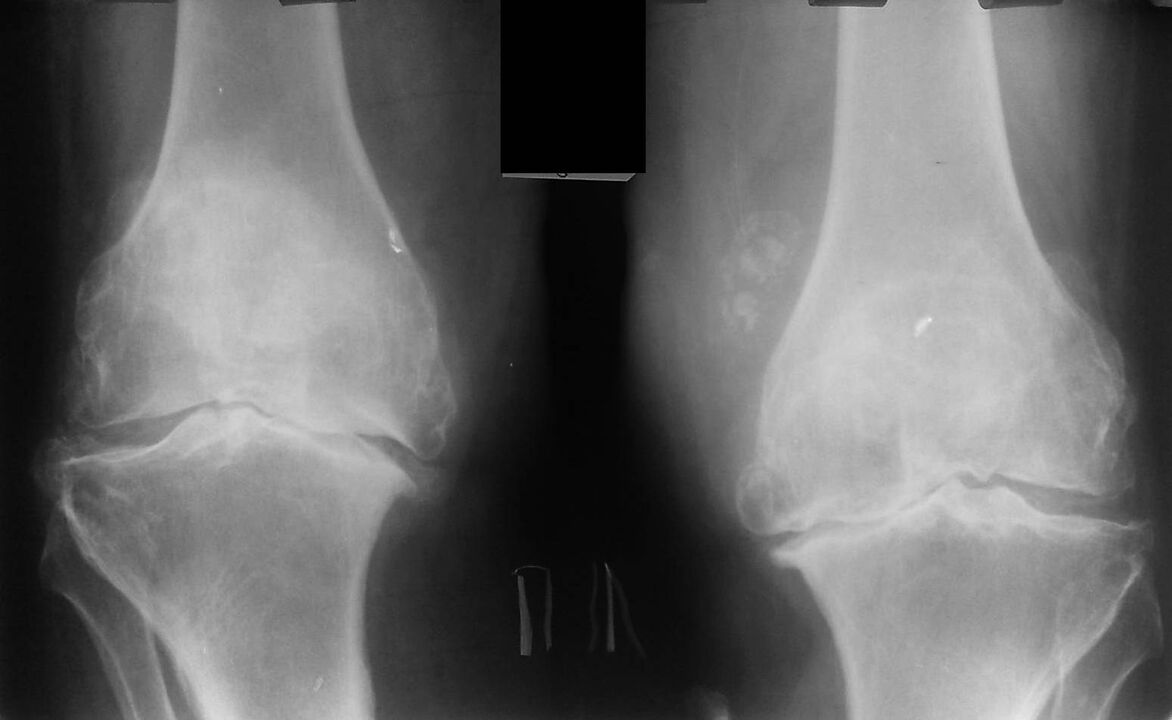
All patients can be divided into two groups. The first group included young people, more often young men, with damage to one, less often both knee joints. They had a knee injury or surgery in their medical history.
The second group includes obese, middle -aged or elderly people, more often women, in whom gonarthrosis has developed in several parts of the body at the same time.
Symptoms of knee osteoarthritis
The symptoms of knee osteoarthritis increase gradually. Patients may not realize they have been ill for years until they notice an obvious deformity in the knee or severe pain.
At the same time, arthritis of the knee joint in the early stages of the disease is most often accompanied by unpleasant and painful sensations in the knee, and some people seek medical advice.
Women who are prone to obesity, especially after the age of 40, are prone to this disease.
Varicose veins also contribute to the development of the disease. At this stage, it is possible to treat the disease at home without the use of tablets and ointments.
The pain is not sudden, it appears gradually, over several years. It usually occurs during sports, walking and other physical activities.
Acute pain may not be a symptom of gonarthrosis, but the result of a crack, meniscus injury or bruising. Severe pain that motivates to turn to a specialist.
The pain often gets worse in the following cases:
- when walking;
- in a long standing position;
- during the slope;
- when lifting the body from a sitting position;
- when carrying heavy objects.
During the implementation of this action, the maximum load acts on the joint, therefore, if the patient feels severe discomfort, he can already be diagnosed with arthritis of the second stage knee joint. Someone tries to move less, taking a static position to avoid pain, but with constant physical activity, the discomfort returns.
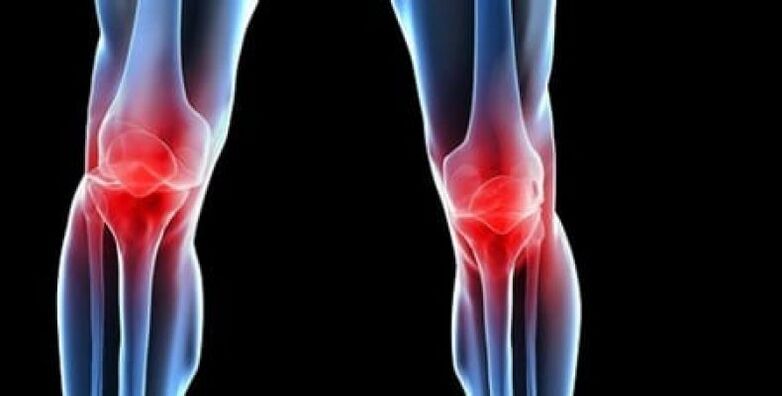
Deformed osteoarthritis of the knee joint accompanies symptoms such as deformity. It becomes noticeable in the second or third stage of the disease. The first signs: the knee is slightly swollen, but retains its shape. In the next stage, there is a change in the shape of the knee, making one leg shorter or longer.
One of the most characteristic symptoms is cramps in the joints, noticeable in the second and third stages. The main thing is to distinguish loud irritation in the joints of healthy people from deaf, dry throat of patients. This noise causes weakness of the ligament apparatus or high mobility of the joint.
To ensure immobility of the knee joint, it is recommended to wear a knee brace.
Forms of gonarthrosis
There are two forms of the disease:
- Primary: Appears as a result of congenital abnormal development of the joints.
- Secondary: Appears as a result of illness and injury.
The primary form of osteoarthritis of the knee joint often develops in childhood and is caused by improper formation of ligaments and joints. They are subject to heavy loads and deformities during physical activity.
Secondary forms of the disease are caused by the following factors:
- Injuries (bruises, sprains, displacements, fractures), which involve violations of bone structures, ligaments and cartilage. All of these are forms of post -traumatic illness.
- Surgery when the meniscus is removed violates the structural integrity of the knee.
- Too much load on the legs (common for weight lifting).
- Obesity. Being overweight puts pressure on the cartilage of the knee joint.
- Passive lifestyle.
- diabetes.
- age.
- Arthritis (inflammatory process in the joints). Prolonged disease is accompanied by the formation of excess fluid in the joint cavity and causes complications.
- Metabolic disorders lead to salt deposition.
- knee transplant.
- Diseases that cause prolonged muscle spasms in the legs or vasocular spasms.
The development of the disease can take a unilateral or bilateral form. Trauma often causes left or right side gonarthrosis, and obesity is bilateral.
Disease stage
There are three stages of gonarthrosis:
- From the onset of the first stage to the visible manifestation of the disease, it may take months or even years. The person complains of intermittent pain in the legs, especially when starting up or down stairs and getting out of bed in the morning. The pictures usually show a narrowing of the connection between the joints, and as a rule, instead of going to the doctor, the patient uses traditional medicine - ointments and tinctures.
- The second stage is characterized by more acute pain, which does not stop with limb immobility. Confusion arose. Fluid accumulates in the joint cavity, X-rays show deformation and growth of bone. The patient at this stage tries in every way possible not to move the affected limb. The treating doctor prescribes injections and chondroprotectors - drugs that help restore cartilage tissue.
- In the last third stage, the pain becomes persistent and often worsens with changes in weather conditions. X-rays show a significant deformity of the knee, which can only be corrected with surgery, the patient must take a complex of chondroprotectors. The patient’s gait changes: he walks with his legs half bent or rolling from side to side.
The cause of the disease. At -risk groups
Overweight
Often, osteoarthritis deformities affect the elderly. In a special risk group are overweight women after 40 years. The probability of pathology in obese people is 4 times higher than in people of normal weight. The pattern is simple: the heavier a person is, the faster the disease progresses and gets worse. In this case, a form of the disease can be called acquired. It was the lower joints that fell under the blow, as they had to bear the greatest load.
People who are overweight also face hormonal imbalances and metabolic disorders, which contribute to the development of obesity and arthrosis.
age
Older people can be called those who have reached the age of 60-65 years and above. In this population, osteoarthritis occurs in 65-85 percent of people.
The reason is age -related changes that negatively affect joint structure. Even regular walking can be a significant burden and stimulate disease progression, while worn cartilage can no longer heal on its own.
Congenital pathology and hereditary factors
The disease can affect both young people and those who are not overweight. As a rule, in such situations, the disease occurs due to congenital defects of the knee joint, for example, lack of intra-articular lubrication. Descendants also play an important role.
Yet the majority of patients with knee pain are those of respectable age. Arthrosis is rare in young people. Unfortunately, young patients do not always receive the treatment they need, as not all doctors consider it necessary to give them the attention they need.
High load
People who make a living with heavy physical work, and athletes of various levels, are also at risk for knee osteoarthritis. In this case, the disease becomes an occupational pathology.
Surgery, injuries and other illnesses
Surgery, trauma, various joint diseases can trigger the appearance of gonarthrosis.
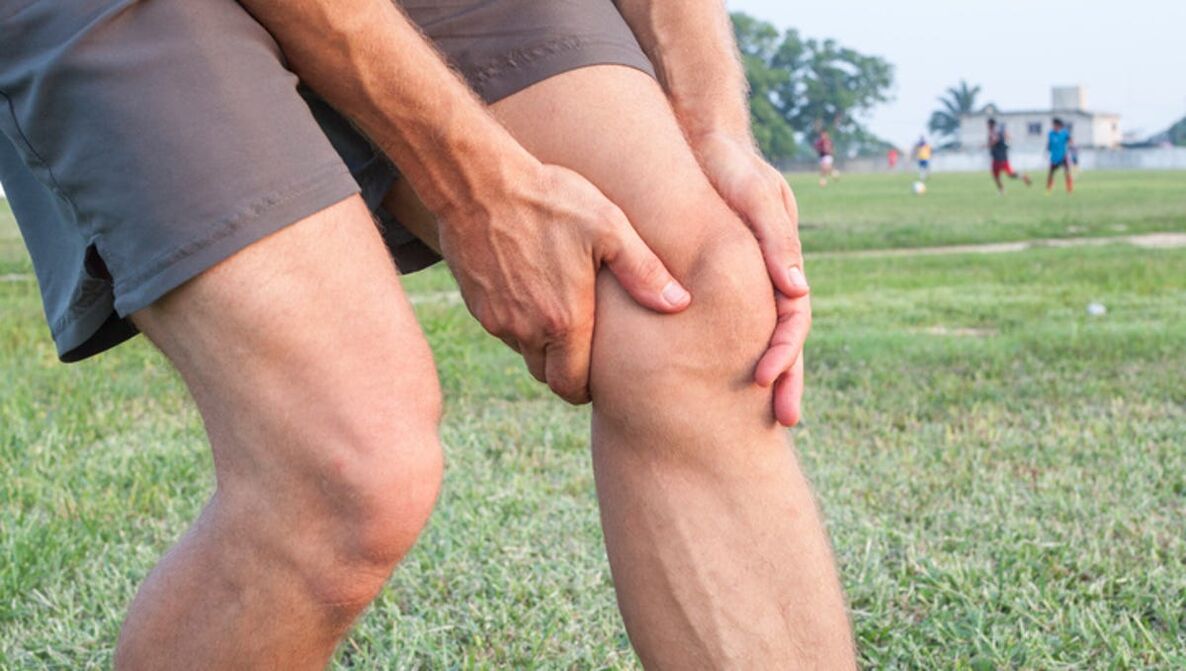
When the cause is still unknown, osteoarthritis of the knee joint is usually referred to as idiopathic.
Diagnosis of arthrosis of the knee joint
The diagnosis is made based on patient complaints, examination data, palpation of diseased joints and X-ray examination.
X-rays are a standard research method that allows you to confirm the diagnosis, determine the degree of pathological changes, monitor the dynamics of the process, and also allows you to exclude other pathological processes (e. g. , tumors) in the tibia and femur. .
It should be noted that major changes in the structure of the knee joint on radiograph may not be present. Subsequently, joint space narrowing and subchondral zone compaction were determined. The articular ends of the femur and especially the tibia expand, the edges of the condylus becoming pointed.
Additional diagnostic methods are CT (computed tomography) and MRI (magnetic resonance imaging), which allow a more detailed study of pathological changes in bone structure and identify changes in soft tissue.
How to treat gonarthrosis of the knee joint
The more acute the stage of the disease, the more complex the treatment of gonarthrosis. The chronic nature of the pathology may remain in the remission phase, when the active manifestations of the disease are minimized or absent at all.
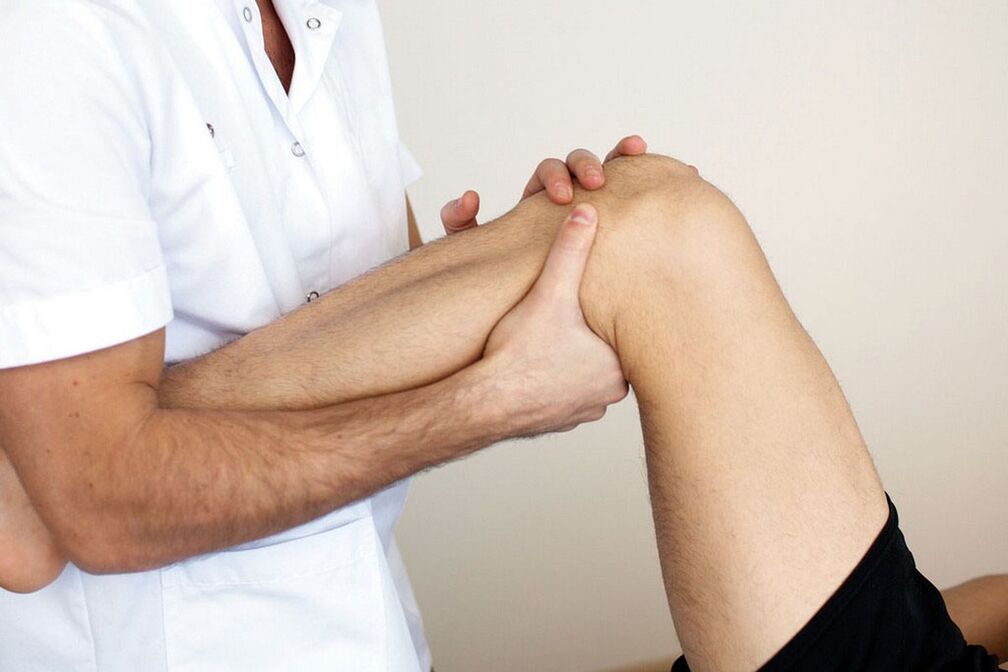
Physiotherapy treatment in combination with chondroprotective drugs gave positive results.
Treatment options include:
- drug therapy (chondroprotectors);
- surgical intervention;
- rehabilitation courses (exercise therapy, massage, etc. ).
Treatment with drugs
With drug therapy, the use of non -steroidal analgesics is prescribed. These medications help relieve the pain and symptoms of synovitis (inflammation). If the pain is very strong or the synovium of the knee joint is severely inflamed, then corticosteroids may be used. These drugs have stronger analgesic and anti-inflammatory effects than non-hormonal painkillers. Muscle relaxation and antispasmodics will help the periarticular muscles relieve cramps.
Antioxidants and vasodilators improve cartilage nutrition. The main drugs for the conservative treatment of this disease are chondroprotectors containing chondroitin and glucosamine sulfate (a natural component of cartilage).
The use of pathogenetic drugs should be systemic and prolonged.
Physiotherapy
Physiotherapy treatment methods (UHF, ultrasound or phototherapy) are considered as an additional way to speed up the healing process.
They also include:
- Acupuncture. This method relieves muscle spasms near the affected joints, normalizes metabolic processes in them, thereby restoring damaged cartilage tissue.
- Hirudotherapy. Treatment with leeches has the same effect as injections, as it improves blood circulation.
- laser therapy. Such a procedure relieves inflammation, swelling, increases metabolism and neutralizes pain.
- Cryotherapy. Both treatments with liquid nitrogen and regular ice at home are effective.
- Magnetotherapy. The influence of magnetic fields not only increases blood circulation in tissues, but also relieves swelling and inflammation.
- Electromyostimulation. With the help of microdischarges currents of different frequencies, muscles are restored and strengthened, and blood circulation in the limbs is improved.
Treatment of knee gonarthrosis with physiotherapy is effective, as it reduces pain. The treating physician usually prescribes such treatment according to the stage of the disease.
Physiotherapy
Exercise therapy for osteoarthritis of the knee joint is one of the main ways to restore atrophic muscles, and it must be done carefully and slowly. If the patient feels the pain return, the exercise should be stopped.
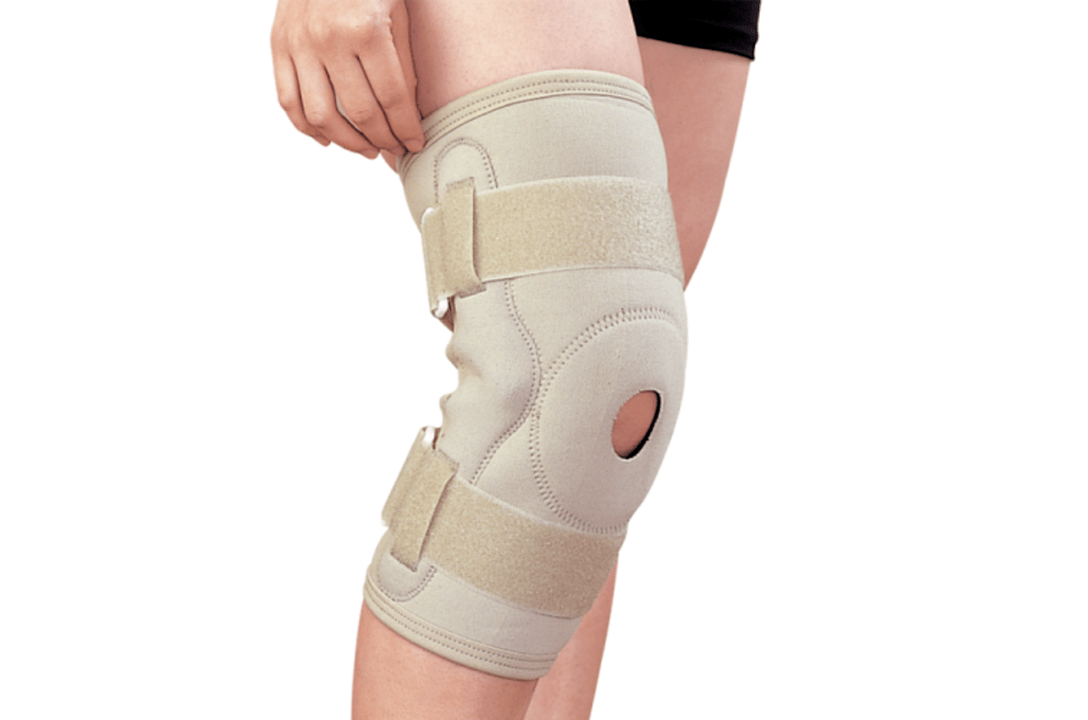
During therapeutic exercises, it is necessary to wear special knee pads. Rehabilitation courses also include the use of these orthopedic devices, their goal is to reduce the load from the affected knee to a crutch or prosthesis. Gonarthrosis patients are often prescribed to wear a knee brace to relieve pain when walking.
Therapeutic gymnastics for gonarthrosis reduces the load on damaged joints, expands the leg muscles. Exercises that load the joints are highly contraindicated. Water gymnastics and swimming are ideal activities.
Orthopedic Therapy
To reduce the load on the affected joint, the patient should use a cane. A good helper for knee osteoarthritis is orthopedic shoes that provide natural foot position as well as load distribution.
massage
Massage relieves muscle cramps, reduces pain and increases range of motion. The procedure also improves blood circulation and provides the joints with nutrients.
Surgical intervention
A significant decrease in work capacity (especially up to 45 years) requires surgical treatment. The choice between corrective treatment methods (osteophyte removal) and radical (knee arthroplasty) depends on the stage of the disease, the age of the patient, symptoms and other factors.
Nutrition
As for a special diet for gonarthrosis, it is most often aimed at reducing the weight of the patient, because excess weight leads to joint strain. It is recommended to eat small meals every 3 hours, eat lean meats (chicken, turkey, rabbit) and exclude fatty pork, and get the necessary protein from legumes.
Refined oil should be replaced with unrefined oil, salt intake should be limited. Therapeutic diets also imply the rejection of canned foods, fried and smoked foods. To restore destroyed cartilage, it is necessary to provide the body with carbohydrates, which are found in cereals and cereal flour.
In addition, it is recommended to drink freshly squeezed juices, such as carrots, beets and apples, to remove toxins and reduce inflammation in the body.
Fish and various jellies act as chondroprotectors and help restore cartilage not only in the early stages, but also during periods of exacerbation.
Folk treatment methods
There are many ointments, compresses, tinctures used by lovers of traditional medicine. These medications are usually made from herbs, medicinal bile, and it helps improve circulation in the joints.
Compresses and ointments also relax the muscles, their effectiveness is very high, but in the third stage of gonarthrosis without the use of drugs, they are practically useless.
Traditional medicine should not be ignored, as it helps relieve discomfort and reduce many of the symptoms of the disease. But in any case, you should consult a doctor and do not self -medicate.
There are contraindications, it is necessary to consult a specialist.
prevention
It is recommended to adhere to the following healthy lifestyle principles:
- balanced diet;
- quitting bad habits (smoking, alcohol);
- sports;
- maintain a healthy weight;
- prevention of sports injuries (bruises, displacements, fractures).
Osteoarthritis of the knee has several treatment options depending on the age and physical condition of the patient. To prevent and control the disease at an early stage, exercise is necessary, as well as timely treatment.



















